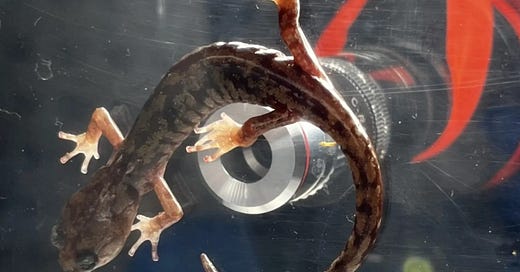One Planet News: Salamander superpower is new to science
This salamander walks, glides, and lands on the tallest tree trunks.
by Annette J Beveridge
The ability to walk up walls and across the ceiling is a superpower but a tree-dwelling salamander takes things to a whole new level.
The wandering salamander (Aneides Vagrans) is native to the Pacific Northwest region of North America and it lives high up in the giant redwood trees.
To live in the crown of these trees, where one false move could lead to a dangerous fall, requires something a little extra and this salamander has an amazing ability which has just been studied in new scientific research.
The salamander may be able to grip the bark of a tree with a nifty trick of its toes.
Blood is pumped in and out of the salamander’s toes which is important for balance and grip as the salamander glides from tree to tree similar to a flying squirrel. Its landing must be accurate and stable.
So how does the salamander ensure its grip?
It’s all down to those blood-filled cavities (called sinuses) visible within the translucent tips of the salamander's toes. At first, researchers thought that the cavities might be useful for blood oxygenation or that they were similar to gills but research proved that the blood sinuses could increase or decrease to adjust the toes on the bark of the tree.
Read more: The brimstone butterfly and butterfly metamorphoses
A Washington State University postdoctoral researcher, Christian Brown, was curious about the toe-tips when involved in a nature documentary as a salamander expert. Both he and his camera assistant, William Goldenberg. noticed that blood rushed into the tips of the toes before they took a step.
Three salamanders were studied during the research phase. They discovered that the blood sinus in each toe tip had two almost parallel chambers with a membrane running down the middle. This enabled blood to flow in either direction from chamber to chamber. It could be drained from each sinus or filled.
It was found that the toe-tip blood distribution was asymmetric but varied depending on whether the salamanders were standing, hanging, climbing or stepping. It means that salamanders can land and grip more readily by swelling a sinus on the toes even wedging it temporarily into a crevice ensuring greater safety.
Photos in order: Christian Brown and William P Goldenberg






